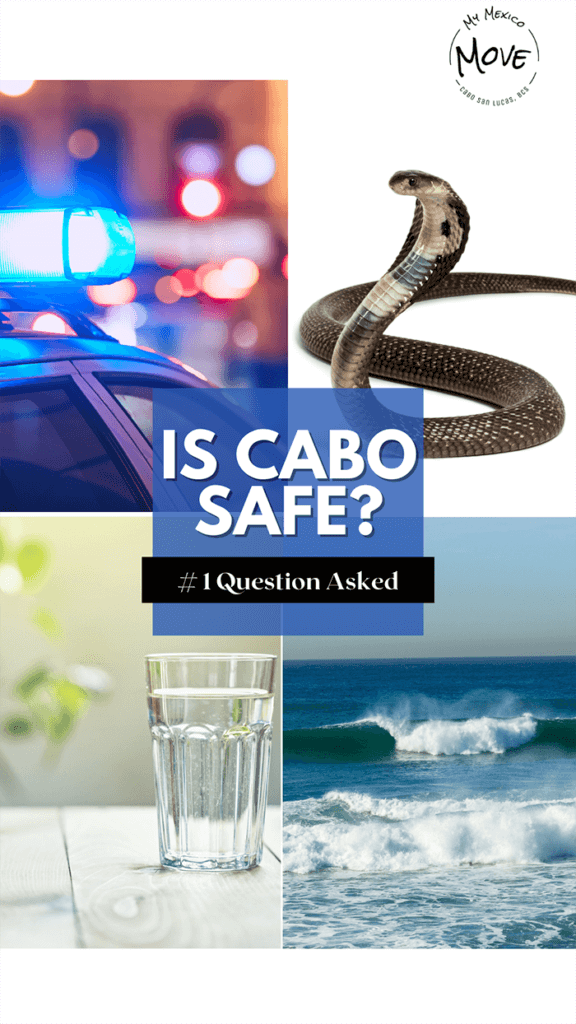Is Cabo safe?
We have been traveling to Cabo San Lucas for about 15 years and not once over the years have, I felt unsafe or been the victim of a petty crime. We found it so safe and amazing that we decided to move here permanently. The most frequently asked question is “Is Cabo safe?” Statistically speaking, travelers are safe in Cabo San Lucas, and most of Mexico, despite media sensationalism.
For the majority of travelers, using the same “travel common sense” you’d use anywhere else in the world will suffice in Cabo. While it’s safe overall, that’s not to say bad things don’t happen in Cabo; they do. However, if you remain aware of yourself and your surroundings, Cabo should be safe for you.
“Millions of Americans go to Mexico on vacation every year, so if we play the numbers game, the number of incidents is very small. When I’m asked if Mexico is a safe place to go travel on vacation, my response is yes.”— says Carlos Barren, 25-year FBI veteran (source: Forbes)
Is Cabo San Lucas Mexico safe at night?
Yes — For the most part, Cabo is safe at night. Now, safety goes way down when there’s alcohol involved, so be mindful of overconsumption, and never accept a drink from a stranger. Other than that, take a taxi back to your vacation home or hotel instead of walking, do not hail taxis directly off the street, instead, use hotel transportation services or taxis that have been officially licensed only; unlicensed cab drivers have been known to rob travelers. Taxis are not metered in Cabo San Lucas, so always negotiate the price before getting in, and don’t pay until you arrive at your destination.
Drinking water in Cabo
The short answer is, not exactly. While the water in Los Cabos is very pure, you still need to be careful. The water distribution pipes and other factors can become contaminated. Drinking water directly from the pipe is therefore not encouraged. However, I do not worry about ice and uncooked fruits and vegetables, I eat street foods and brush my teeth with tap water. I will order house water at restaurants; this is usually from a filtered water system or large purified jugs.

Swimming in and around Los Cabos
Enjoying the beach can be one of the highlights of your Mexican vacation, but it's important to keep safety in mind should you choose to swim in the ocean.
Mexican authorities make it easy for you: there are flags on the beach to let you know the current conditions of the water and whether it is safe to swim or not.
Exercise Caution When Swimming in the Ocean
Strong undertow and rough surf are common on many of Mexico's beaches. Dangerous rip currents may be present even though there may be no visible indication from the shore. Before entering the water, you should check the surf conditions and see if a warning flag is up. Be particularly cautious if you are not a strong swimmer or if you have been drinking alcoholic beverages.
Most beaches in Mexico do not have lifeguards. Remember that you are responsible for your safety and if you decide to enter the ocean, you do so at your own risk. A beach warning flag system is in use in many of the more popular beach areas.
The colors of the beach flags have the following meanings:
- Green Flag: Water conditions are safe for swimming.
- Yellow Flag: Use caution while swimming.
- Red Flag: Dangerous conditions.
- Black Flag: This is the highest warning level. Do not swim.
- White Flag: Jellyfish present.
Snakes, Scorpions, and Insects: Wildlife Dangers in Cabo San Lucas
Besides jellyfish, there are other animals to be wary of in Baja California. There are 35 species of snakes in Cabo San Lucas, about half of which are venomous. Most people never encounter one, but it’s still good to know what the poisonous snakes in Cabo San Lucas look like: The yellow-bellied sea snake looks like a floating stick in the water, while the area’s 18 species of rattlesnake are identifiable by their signature noisemakers.
Cabo’s snakes tend to hide in rock piles, brush, or trash piles, so avoid those. It helps to wear closed-toe shoes, stay on the beaten path, and carry a travel first-aid kit. If you get bitten, keep the wound below your heart and don’t cut open the wound or try to suck the venom out. Most importantly, get to a doctor or hospital as soon as possible.
Bugs in Cabo San Lucas are also worth knowing about. The Baja brown recluse spider, in particular, can cause extremely damaging bites. Identify it by its tan to brown color; long, fuzzy legs; and the “violin” pattern on its back.
Cabo has plenty of mosquitoes too, so wear bug repellent and pack antihistamines. There haven’t been many cases of Zika in Mexico recently, but the CDC reminds travelers that a risk of the mosquito-borne illness may remain.
Mexico has upwards of 200 scorpion species, though only eight of those are dangerous to humans. The scorpions in Baja, Mexico, that travelers need to know about include the venomous bark scorpion, which is yellow and about three inches long. You don’t want it to sting you, especially if you’re older or a child. If you do get stung, apply ice and seek medical help immediately.
Scorpions are more active in summer and at night. To keep your life free of them, tap and shake out your shoes before putting them on, shut your bags tightly so they can’t crawl in, and leave them alone if you see them.
So, my Cabo loving friends, I hope you will take a trip my way one day soon! Check us out at ProperSavvy!


